How Weeds Can Kill Trees
The majority of weeds are short, fast-growing invaders that, at worst, wilt our lawns or transform our garden beds into mini-jungles. However, some weeds are large and strong enough to kill even mature shade trees.
One of the best strategies to keep weeds out of the yard is to plant more plants. If you fill empty spaces with plants that you want – especially dense plantings of them – there’s no room left for weeds to elbow in. Remember, bare soil is an open invitation for weeds.
Some of the best choices for weed-rejecting plants are groundcovers. This category of plants is made up of selections that quickly grow up, out, and over soil, creating a barrier that prevents most anything else from getting a foothold underneath. These botanical weed-blockers don’t necessarily have to be short ground-huggers. Groundcovers can be any dense, spreading, and/or horizontally growing species.
The key is making good choices for the site, then keeping a lid on weeds until the groundcover has, well, covered the ground. Here are 20 good groundcover plants of varying size that grow well throughout most of the U.S., especially in USDA Zones 5 through 8. Half are for sunny spots, half for shadier ones, and there’s a mix of natives and non-natives.
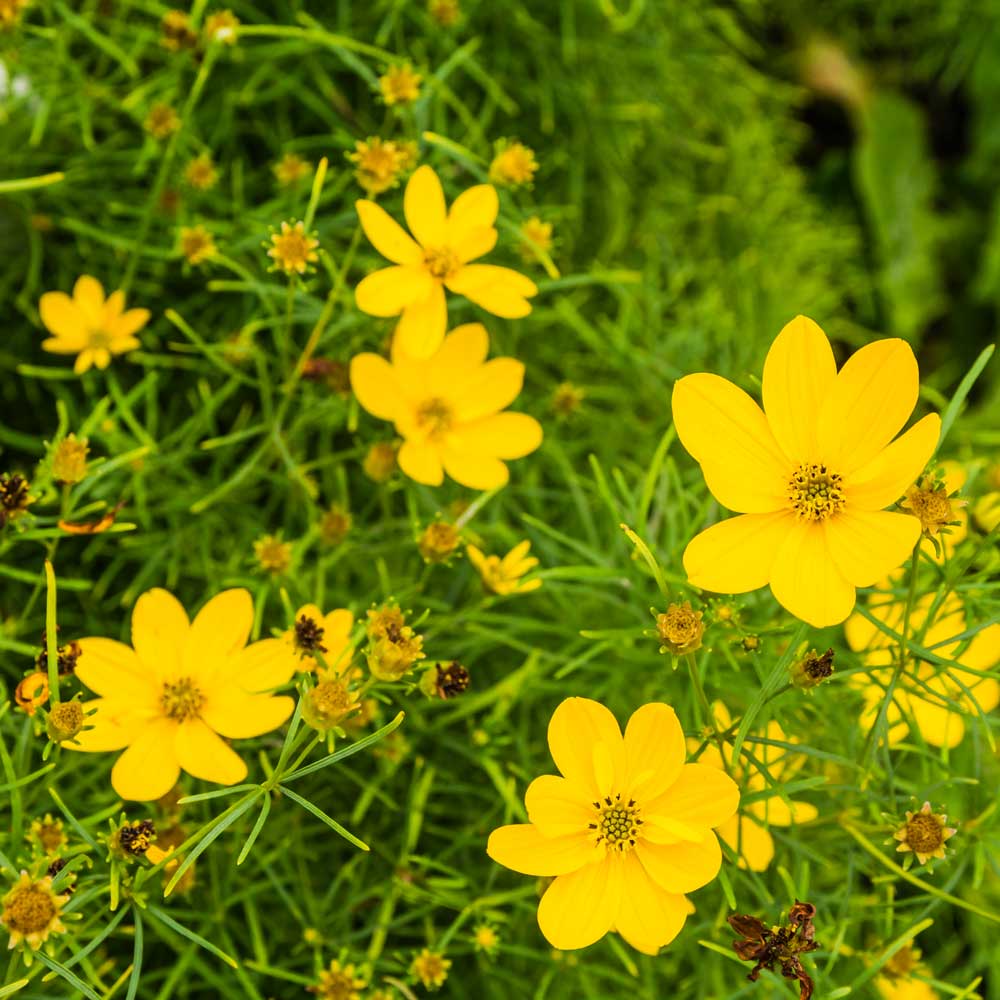
Threadleaf coreopsis verticillata. Gubernat / iStock / Getty Images Plus
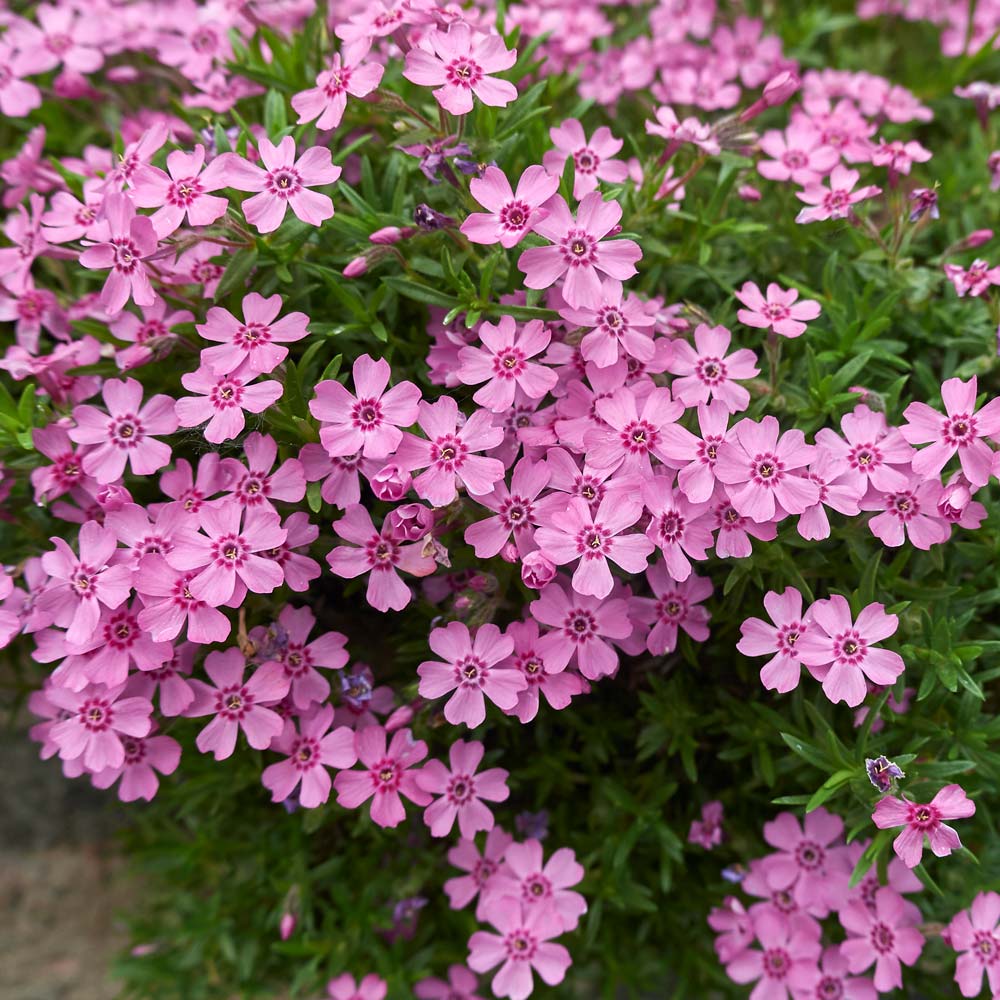
Pink moss phlox. seven75 / iStock / Getty Images Plus
Sumac ‘Gro-Low’ (Rhus aromatica). A woody shrub with yellow spring flowers and showy red-orange fall foliage. Grows 2 to 3 feet tall, 6 to 8 feet wide.
Prairie dropseed (Sporobolus heterolepis). A short, clumping grass with arching plumes and maroon fall foliage. 2 feet tall, 2 to 3 feet wide.
Threadleaf coreopsis (Coreopsis verticillata). A low, spreading perennial with fine, lacy leaves and yellow summer flowers. 18 inches tall, 2 feet wide.
Juniper ‘Grey Owl’ (Juniperus virginiana). A silvery-gray needled evergreen with an arching, spraying habit. 3 to 4 feet tall, 6 to 8 feet wide.
Moss phlox (Phlox subulata). A low, spreading, mounding, fine-leafed perennial with pink-lavender spring flowers. 8 to 10 inches tall, 2 to 3 feet wide.
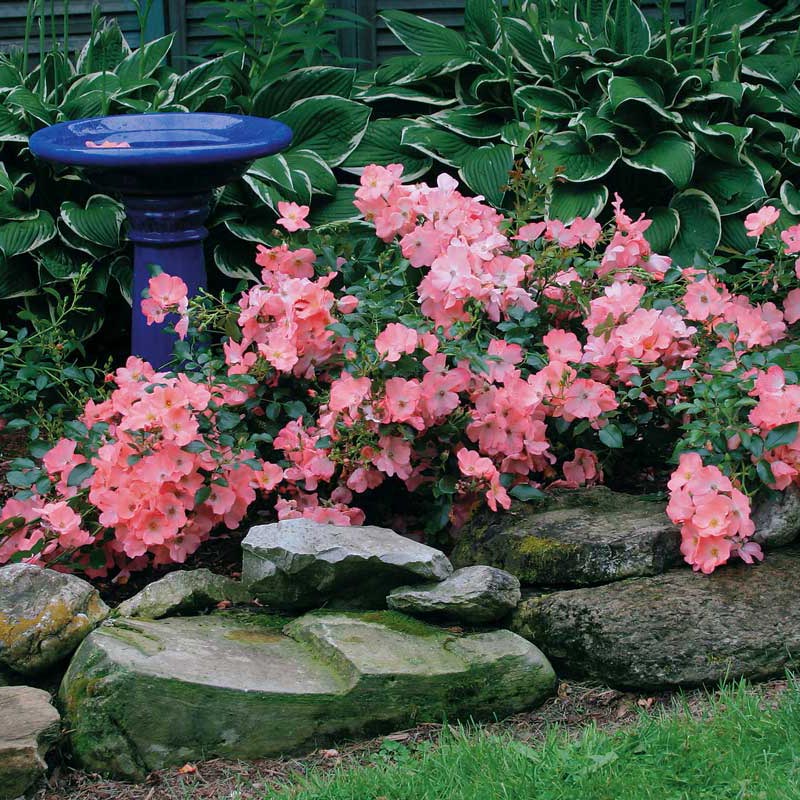
Flower Carpet® Coral Rose. Photo courtesy Anthony Tesselaar
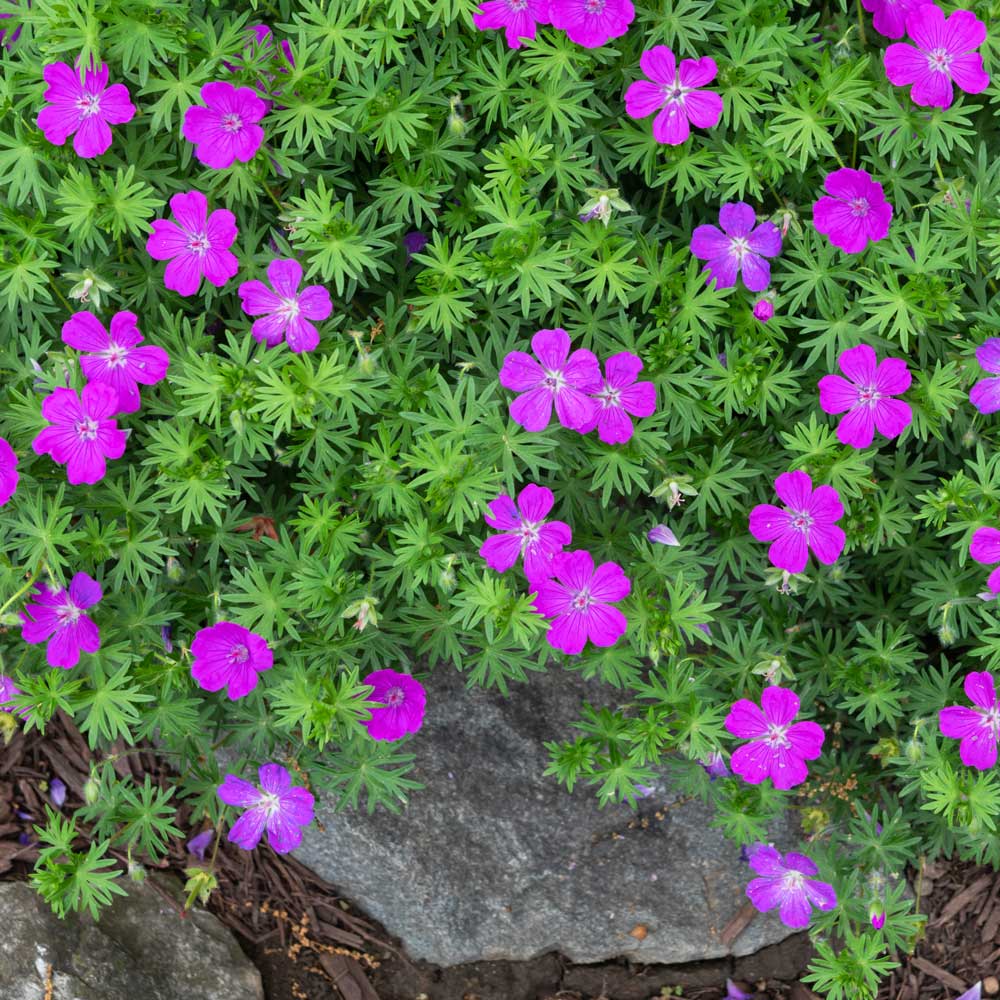
Cranesbill hardy geranium. Eurobanks / iStock / Getty Images Plus
Groundcover or “landscape” roses. Low-growing, low-care shrub types that come in a variety of bloom colors, often flowering through much of the summer and into fall. The Drift and Flower Carpet series are two of the best known. 2 feet tall, 3 to 4 feet wide.
Catmint (Nepeta fassenii). A drought-tough perennial with silvery-gray foliage and blue flowers in early to mid-summer. 15 to 18 inches tall, 2 to 3 feet wide.
Creeping sedum (Sedum species). A drought-tough succulent perennial with versions that either flower yellow in early summer or pink in late summer. Some varieties have golden or dark foliage as well. 8 to 10 inches tall, 2 to 3 feet wide.
Hardy geranium (Geranium species and hybrids). A long-blooming, low-and-wide perennial with blue-purple or pink flowers for weeks in summer. 18 to 24 inches tall, 2 to 3 feet wide.
Leadwort (Ceratostigma plumbaginoides). A spreading perennial with blue flowers in late summer and scarlet fall foliage. 15 to 18 inches tall, 2 to 3 feet wide.
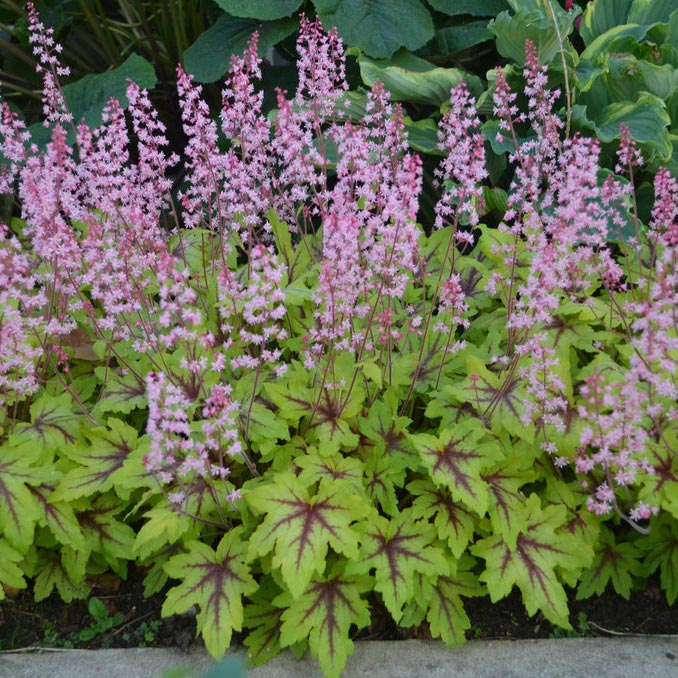
Heucherella hybrids 'Eye Spy'. Photo courtesy Proven Winners
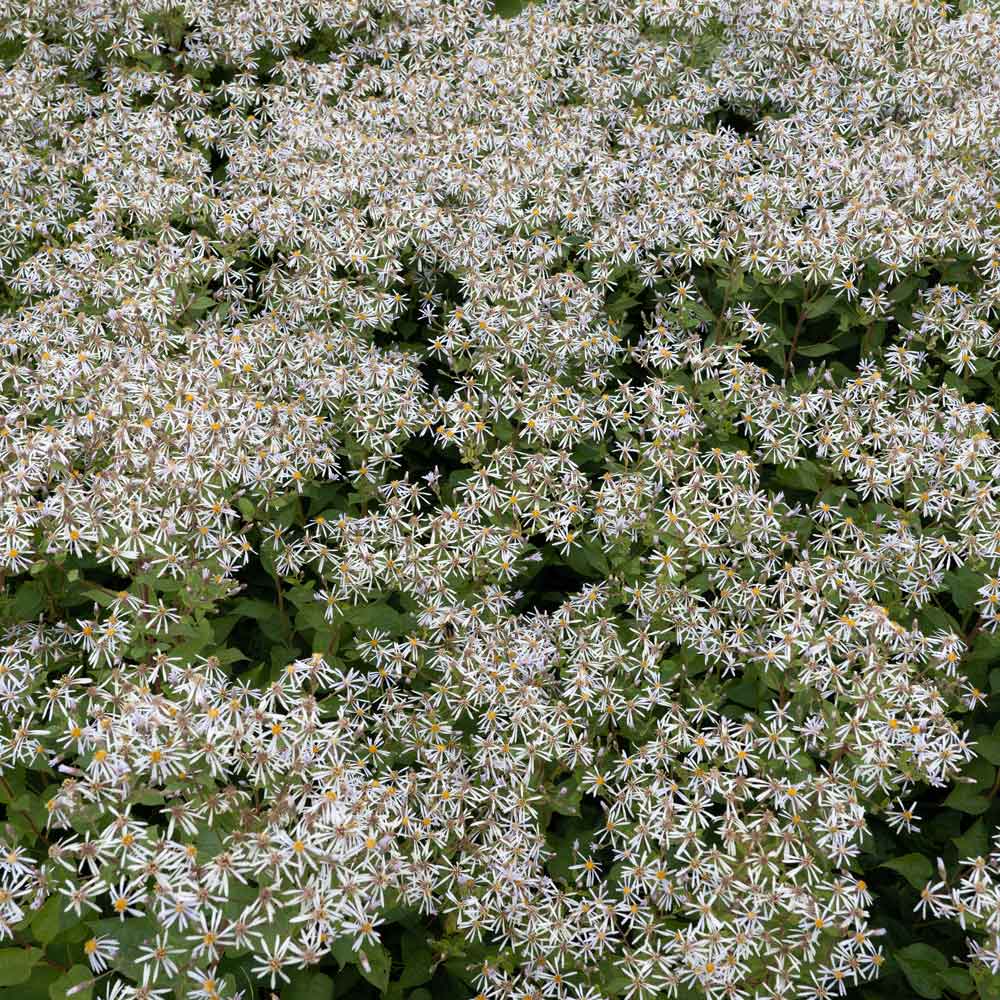
White wood aster eurybia divericata
Foamflower (Tiarella cordifolia). A spring-blooming perennial with pink or white bottle-brush flowers and two-tone maroon-and-green variegated foliage. 10 to 12 inches tall, 2 feet wide.
Coralbells (Heuchera villosa and hybrids). A wide-leafed perennial with early-summer pink or white flowers atop wiry stems. Leaves come in a variety of showy colors besides plain green. 12 to 18 inches tall, 24 to 30 inches wide.
Woods sedge (Carex woodii). A green-bladed grassy perennial with an arching habit and straw-colored flowers from April to May. 12 inches tall, 24 to 30 inches wide.
White wood aster (Eurybia divericata). A mounding, late-summer-blooming perennial with daisy-like white flowers. 2 feet tall, 2 to 3 feet wide.
Christmas, autumn, and wood ferns (Polystichum acrostichoides, Dryopteris erythorsora, Dryopteris marginalis). All three of these native ferns are dense, spreading, upright, and resistant to deer. 2 to 3 feet tall, 2 to 3 feet wide.
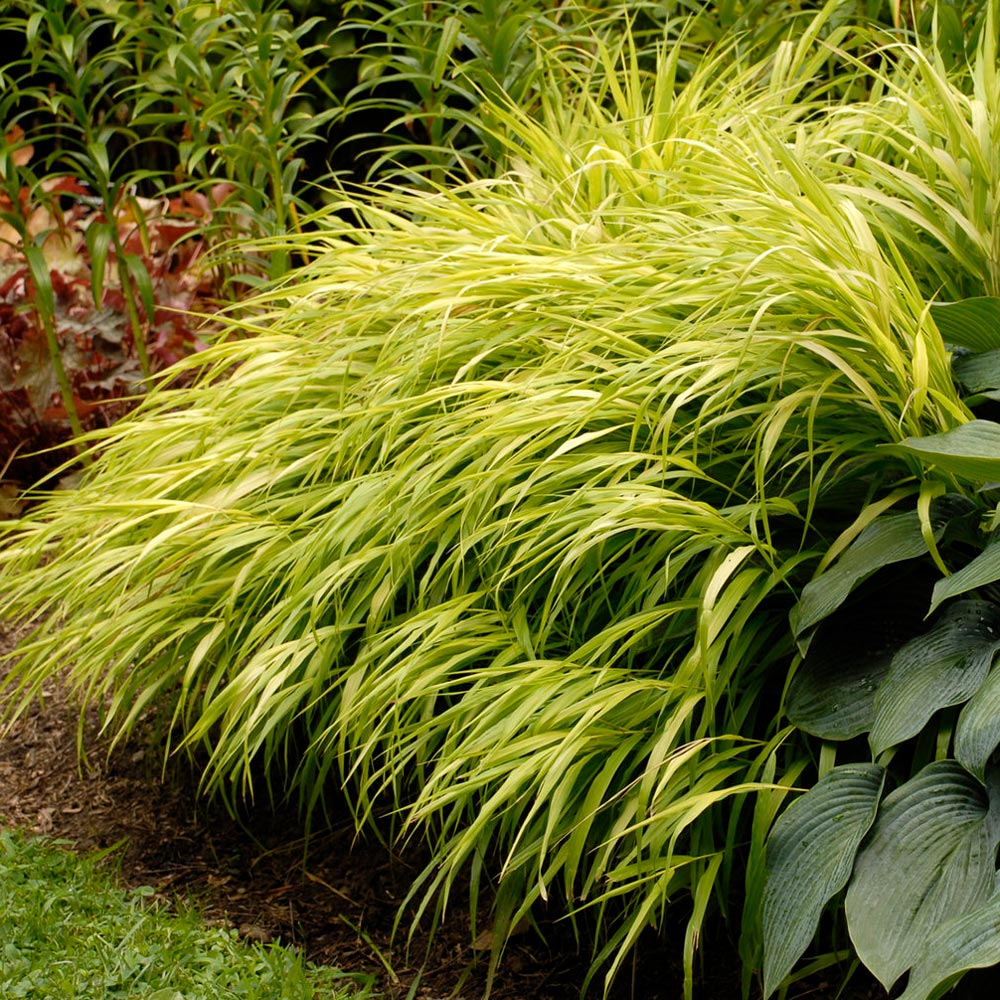
Japanese forest grass Hakonechloa macra. Photo courtesy Proven Winners
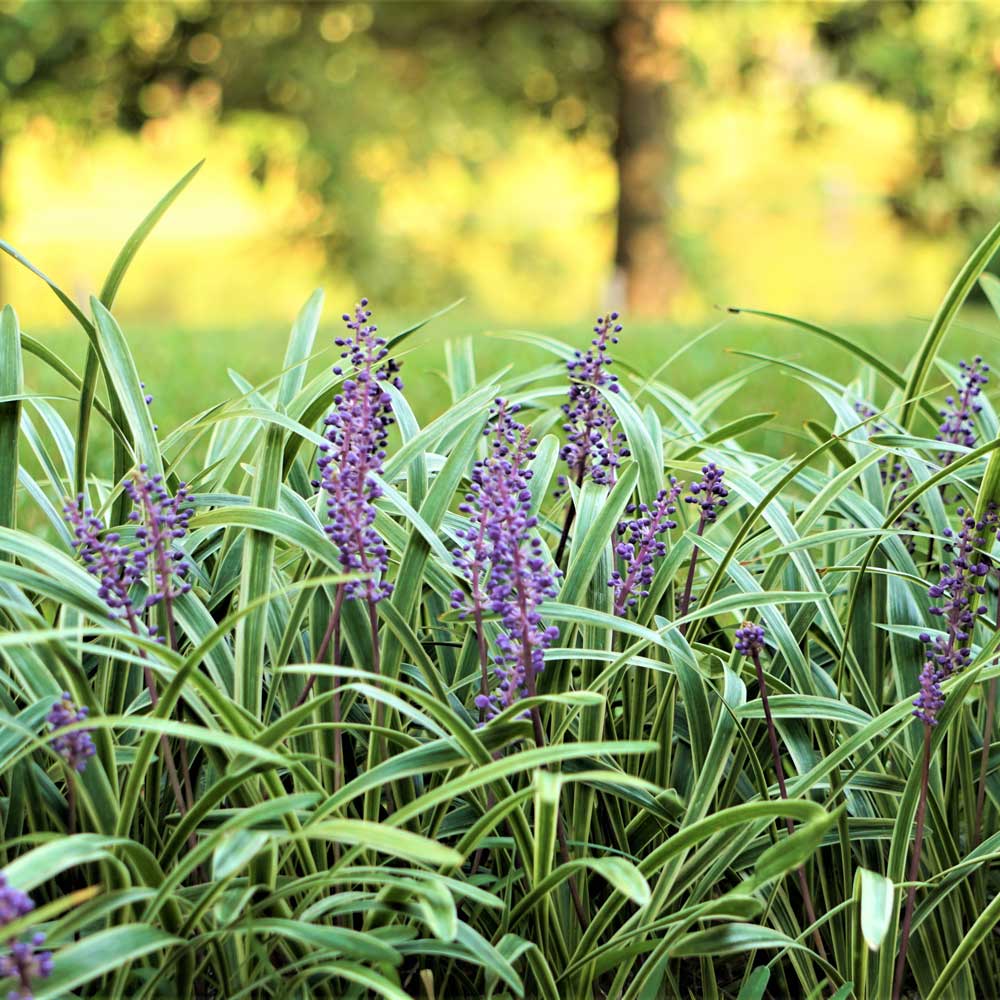
Liriope muscari or lily turf. ANCHASA MITCHELL / iStock / Getty Images Plus
Sweetbox (Sarcococca hookeriana). A glossy, broad-leaf evergreen that produces small, fragrant, white flowers in early spring. 2 feet tall, 3 to 4 feet wide. (Hardy only to Zone 6.)
Japanese plum yew ‘Duke Gardens’ or ‘Prostrata’ (Cephalotaxus harringtonia). Horizontally growing varieties of green, soft-needled evergreens that deer don’t like. 3 feet tall, 5 feet wide. (Hardy only to Zone 6.)
Japanese forest grass (Hakonechloa macra). A clumping, arching ornamental grass that comes in green, gold, and green-and-gold variegated versions. 2 feet tall, 30 inches wide.
Lenten rose (Helleborus orientalis and hybrids). A deer-resistant, glossy-leafed, mounding perennial with large, hanging, bell-shaped flowers of white, rose, pink, or lavender in very early spring. 18 to 24 inches tall, 24 to 30 inches wide.
Liriope (Liriope muscari). A grassy perennial with spiky late-summer lavender flowers that’s one of the best performers in dry shade under trees. 15 to 18 inches tall, 24 to 30 inches wide.
Browse our Lawn & Garden Tips for more advice on controlling weeds in your landscape. Have a weed problem in the garden? See Preen’s lineup of garden weed preventers.